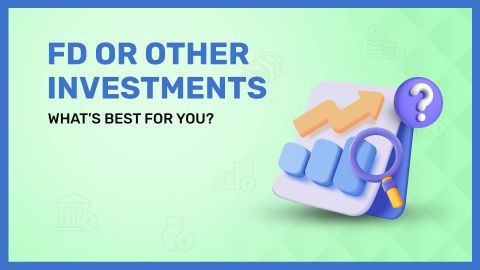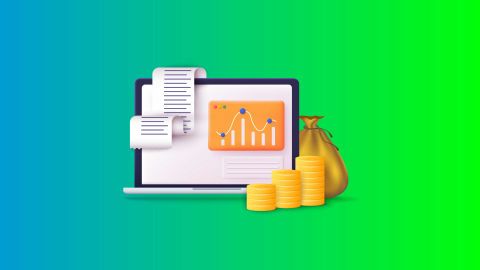Investing can feel overwhelming, especially when you're trying to make sense of financial jargon like "risk-free rate of return." But don’t worry—it’s not as complicated as it sounds. At its core, the risk-free rate is simply the return you’d expect from an investment that carries zero risk. It’s a benchmark that helps you evaluate whether other investment options are worth the risk you’re taking.
In India, this benchmark is usually the yield on a 10-year government bond. Why? Because government bonds are considered extremely safe—they're backed by the government itself. While no investment is entirely risk-free, government bonds come pretty close. In this article, we’ll break down the meaning of the risk-free rate, why it matters, how it’s calculated, and what role it plays in models like CAPM and financial planning in general.
Understanding the risk-free rate is your first step toward smarter investing. Once you grasp the basics, it’s easier to compare mutual funds and other options based on actual return potential—not just guesswork. Compare Mutual Fund Options Now!
What is the risk-free rate?
The risk-free rate is the return you would expect from an investment that carries no risk of loss. In most cases, this comes from government bonds issued by countries with stable economies—because these are seen as the safest places to park money. In India, the 10-year government bond yield is often used as a stand-in for the risk-free rate.
For example, if the 10-year government bond yield is 7.365%, that means you could theoretically earn 7.365% annually without taking on any additional investment risk. This rate serves as a baseline—helping investors figure out if other investment options are worth it.
Formula of risk-free rate (rf)
To understand how the risk-free rate works, it’s important to know that there are two types:
Nominal Risk-Free Rate – This is the raw return from a risk-free investment, like a government bond, without accounting for inflation.
Real Risk-Free Rate – This adjusts the nominal rate to account for inflation, showing you the true growth in your purchasing power.
Here’s the formula to calculate the real risk-free rate:
Real Risk-Free Rate (rf) = (1 + Nominal Rate) ÷ (1 + Inflation Rate) − 1
Let’s say the nominal risk-free rate is 8.2% and inflation is at 3.0%. Using the formula:
Real rf Rate = (1 + 8.2%) ÷ (1 + 3.0%) − 1 = 5.0%
This means your money is effectively growing at 5% a year after adjusting for inflation.
How to calculate risk-free rate (rf)?
The risk-free rate is often calculated using the current yield of a government bond—usually a 10-year bond in India. This yield represents the return you’d earn from a low-risk investment over a long period.
While no investment is completely risk-free, government bonds are considered as close as it gets. That’s because governments can always print more money to meet their debt obligations, making the chance of default extremely low.
In financial models like the Capital Asset Pricing Model (CAPM) or Weighted Average Cost of Capital (WACC), this risk-free rate is used as a starting point. It represents the return an investor would require just for tying up their money, without taking on any additional risk.
This baseline becomes especially useful when you are comparing higher-risk options like mutual funds. If the expected return from a mutual fund doesn’t clearly beat the risk-free rate, it may not be worth the extra risk. Explore Top-Performing Mutual Funds!
Real risk-free rate and inflation rate assumptions
When you’re looking at the true value of your investment returns, inflation becomes an important piece of the puzzle. This is where the real risk-free rate comes in. It shows how much your money actually grows after accounting for rising prices over time.
Let’s break it down.
The nominal rate is what you see on paper—it’s the interest rate offered by a risk-free investment, like a government bond.
The inflation rate reflects how much the cost of goods and services is expected to rise.
The real risk-free rate is what you get after adjusting for that inflation. It shows how much extra value you’re gaining in terms of actual purchasing power.
Here is an example to make this clearer:
Let us say the real risk-free rate is 5% and the inflation rate is 3%. To figure out the nominal rate, you’d use this formula:
Nominal rf Rate = (1 + Real rf Rate) × (1 + Inflation Rate) – 1
Plug in the numbers:
Nominal rf Rate = (1 + 5.0%) × (1 + 3.0%) – 1 = 8.2%
So, a government bond offering an 8.2% return is effectively giving you a real (inflation-adjusted) return of 5%.
Nominal risk-free rate calculation example
Now that we’ve covered how inflation factors in, let’s look at how to calculate the nominal risk-free rate step-by-step.
Imagine this:
You know the real risk-free rate is 5%
The expected inflation rate is 3%
Here’s the formula again:
Nominal rf Rate = (1 + Real rf Rate) × (1 + Inflation Rate) – 1
Nominal rf Rate = (1 + 5.0%) × (1 + 3.0%) – 1
Nominal rf Rate = (1.05 × 1.03) – 1 = 1.0815 – 1 = 8.15%
That 8.15% is your nominal risk-free rate—it tells you what your investment would earn before factoring in inflation. It is a simple, reliable way to compare investment returns against inflation to see if your money is truly growing.
What is the role of the risk-free rate in CAPM?
The risk-free rate plays a key role in many financial models—and one of the most important among them is the Capital Asset Pricing Model (CAPM). CAPM helps you figure out the return you should expect from a risky investment, like stocks or mutual funds.
The formula looks like this:
Expected Return = Risk-Free Rate + Beta × (Market Return – Risk-Free Rate)
Here’s how it works:
The risk-free rate is the baseline—it’s what you’d earn without taking any risk.
Beta shows how much the asset moves compared to the market. Higher beta means higher risk.
The market return minus the risk-free rate is the equity risk premium—it’s the extra return you expect for taking on market risk.
By plugging these into the CAPM formula, you get a clearer picture of whether a risky asset (like a mutual fund or stock) is worth your investment. The risk-free rate anchors this model—it shows the minimum return you should accept before even considering additional risk.
How does the risk-free rate affect discount rate?
The risk-free rate doesn’t just help you set expectations for return—it also plays a major role in how companies and investors value assets. It directly influences something called the discount rate, which is used in models like WACC (Weighted Average Cost of Capital) to calculate how much future cash flows are worth today.
Think of the discount rate as a lens that adjusts the value of future money. If the risk-free rate goes up, that lens gets stronger, meaning future earnings appear less valuable today. This usually leads to lower company valuations and more conservative investment decisions.
On the flip side, when the risk-free rate drops, discount rates fall too—making stocks and other risky assets look more attractive, since their future returns are now worth more in today’s terms.
For investors, this means changes in the risk-free rate can subtly—but powerfully—influence what’s considered a “good investment.”
Other topics you might find interesting |
|||
What is the impact of rising risk-free rate on valuation?
During the early COVID-19 period, the yield on India’s 10-year government bond dropped as low as 0.6% to 0.8%. With such low returns on “safe” investments, many investors looked elsewhere—especially toward stocks, including big-name tech companies.
Why? Because when the risk-free rate is low, the opportunity cost of investing in riskier assets goes down. In other words, people are more willing to take on stock market risk if government bonds are barely offering returns. As a result, the market—particularly the tech sector—rebounded faster than expected, driven by the hunt for higher returns.
This shows how rising or falling risk-free rates can shift investor behaviour and dramatically affect asset valuations across markets.
This is also why investors often diversify into mutual funds—these funds give exposure to a mix of equity, debt, and hybrid instruments, helping balance risk even when market sentiment shifts. Compare Mutual Fund Options Now!
How risk-free is the risk-free rate of return?
Despite its name, the risk-free rate isn’t truly free of all risk. It’s called “risk-free” because it typically refers to government bonds, which have an extremely low chance of default—especially from stable governments.
But here’s the catch: these bonds are still affected by inflation, interest rate fluctuations, and changes in government credibility. Even if your principal is safe, the real value of your returns can be eroded over time, especially if inflation spikes or if interest rates rise sharply after you’ve locked in a lower yield.
So, while government bonds are among the safest places to park your money, no investment is 100% risk-free. The term is more about comparative safety, and that’s why investors use it as a benchmark—not a guarantee.
Key takeaways
The risk-free rate of return is a baseline used to measure how much extra return an investor should expect when taking on additional risk.
In India, the 10-year government bond yield is commonly used as a proxy for the risk-free rate.
While it’s considered “risk-free,” even government bonds are subject to inflation, interest rate changes, and macroeconomic factors.
The real risk-free rate is what you get after adjusting for inflation—this tells you the actual purchasing power of your returns.
Understanding the risk-free rate helps investors assess if an investment's potential return justifies the risk taken.
The risk-free rate is a critical input in financial models like CAPM and in estimating discount rates for asset valuation.
A rising risk-free rate can lead to lower valuations in equities, as investors demand higher returns for taking on more risk.
Conclusion
While it sounds like a perfect benchmark, the risk-free rate is more of a guiding light than a guarantee. It helps investors compare options, price risk, and make more grounded financial decisions.
Even though no investment is truly “risk-free,” understanding this concept can shape smarter strategies—especially when building a portfolio that balances stability with growth.
If you are exploring how to optimise your investment strategy using this benchmark, you’ll find plenty of diversified mutual fund options that offer a range of risk-adjusted returns.
For those seeking a wide range of investment opportunities, the Bajaj Finserv Platform offers access to over 1000 mutual funds schemes, providing a valuable resource for making well-informed investment choices.
Essential tools for all mutual fund investors
| Mutual Fund Calculator | Lumpsum Calculator | Systematic Investment Plan Calculator | Step Up SIP Calculator |
| SBI SIP Calculator | HDFC SIP Calculator | Nippon India SIP Calculator | ABSL SIP Calculator |




